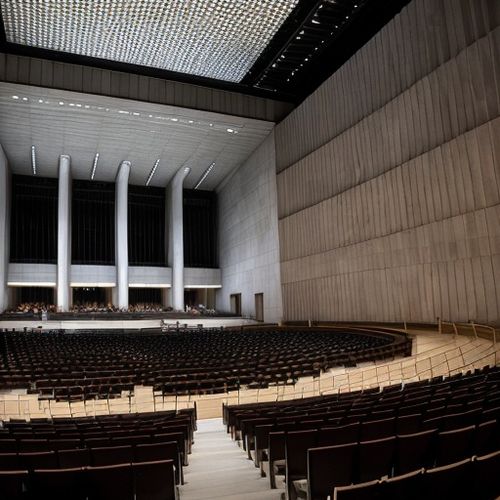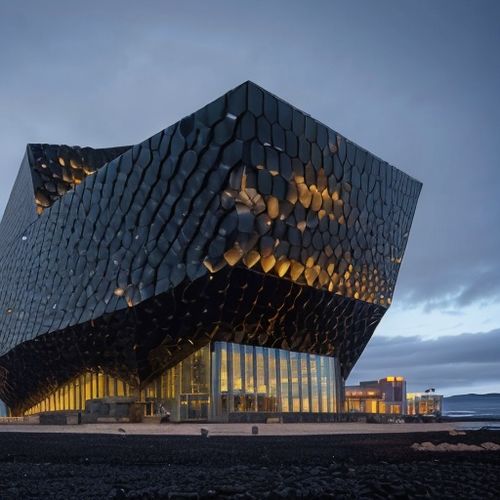The Glastonbury Festival, one of the world's most iconic music events, has long prided itself on its commitment to environmental sustainability. However, recent reports reveal a stark contradiction to its green ambitions: the festival's carbon emissions have surged by 12% despite its highly publicized carbon-neutral pledge. This setback has sparked intense debate among environmentalists, festival organizers, and attendees, raising questions about the feasibility of large-scale events achieving true sustainability.
The Promise of Carbon Neutrality
For years, Glastonbury has positioned itself as a leader in eco-conscious event management. From banning single-use plastics to promoting public transportation, the festival's initiatives were lauded as groundbreaking. In 2019, organizers made headlines by announcing an ambitious plan to achieve carbon neutrality by 2025. The pledge included measures like renewable energy installations, tree-planting programs, and partnerships with carbon offset projects. At the time, it seemed like a watershed moment for the music industry.
The Harsh Reality
New data from independent environmental auditors tells a different story. Emissions from the 2023 festival not only failed to decrease but actually increased by 12% compared to pre-pandemic levels. The most significant contributors were audience travel (accounting for 68% of total emissions), generator use (19%), and waste management (8%). Despite efforts to encourage carpooling and coach travel, private vehicle use rose sharply, with many attendees citing post-lockdown "pent-up demand" for convenience and flexibility.
Behind the Numbers
Several factors explain this disappointing outcome. The festival's expansion to accommodate 210,000 attendees—15% more than in 2019—directly increased its carbon footprint. Additionally, extreme weather conditions forced organizers to rely more heavily on diesel generators when solar arrays proved insufficient. Perhaps most telling was the failure of carbon offset projects; many of the international reforestation initiatives Glastonbury invested in were either delayed or underperformed due to political instability in recipient countries.
Industry-Wide Challenges
Glastonbury's struggle reflects broader difficulties facing the live events sector. As festivals resume post-pandemic, many are finding that sustainability goals conflict with financial realities and audience expectations. "There's a fundamental tension between growth and green policies," explains Dr. Emma Richardson, an environmental researcher specializing in cultural events. "When ticket sales fund sustainability measures but more tickets mean more emissions, festivals find themselves in a catch-22 situation."
Organizers Respond
Festival co-organizer Emily Eavis acknowledged the setback but remains committed to the long-term goal. "This isn't about abandoning our principles but recognizing the complexity of the challenge," she stated. New measures for 2024 include a tiered ticketing system that rewards low-carbon travel choices, onsite renewable energy storage, and partnerships with UK-based carbon capture projects. Critics argue these are incremental changes when transformative action is needed.
The Attendee Dilemma
Many festival-goers express conflicting feelings. "I've been coming to Glastonbury for fifteen years because of its values," shares regular attendee Mark Thompson, "but if my presence is part of the problem, do I stop coming?" This sentiment highlights the ethical quandary facing environmentally conscious music fans. Some propose radical solutions like capping attendance or substantially increasing ticket prices to fund more aggressive sustainability measures—ideas that organizers have so far resisted.
Expert Perspectives
Environmental analysts suggest the festival may need to rethink its approach entirely. "Carbon neutrality claims often rely on questionable offset accounting," warns climate policy analyst Priya Kapoor. "Real leadership would mean absolute emission reductions, not creative bookkeeping." Others point to innovative models like Denmark's Roskilde Festival, which achieved a 50% emissions cut through mandatory green travel and localized food sourcing—though such measures require significant cultural and operational shifts.
The Road Ahead
As Glastonbury prepares for its next edition, the music industry watches closely. Will the festival double down on its sustainability vision, or will commercial pressures dilute its environmental ambitions? The outcome could set a precedent for major events worldwide. One thing is certain: in an era of climate crisis, symbolic gestures are no longer enough. The disconnect between Glastonbury's green image and its growing carbon footprint serves as a cautionary tale—and perhaps the catalyst for more meaningful change.
The festival's journey mirrors society's broader struggle to balance modern comforts with ecological responsibility. As audiences increasingly demand both spectacular experiences and environmental integrity, event organizers must navigate uncharted territory. Glastonbury's stumble doesn't negate years of progressive work, but it does underscore how difficult genuine sustainability proves to achieve—especially when the music must go on.

By Victoria Gonzalez/Apr 14, 2025

By Ryan Martin/Apr 14, 2025

By John Smith/Apr 14, 2025

By Eric Ward/Apr 14, 2025

By Victoria Gonzalez/Apr 14, 2025

By Ryan Martin/Apr 14, 2025

By James Moore/Apr 14, 2025

By Megan Clark/Apr 14, 2025

By John Smith/Apr 14, 2025

By Joshua Howard/Apr 14, 2025

By Laura Wilson/Apr 13, 2025

By Grace Cox/Apr 13, 2025

By Benjamin Evans/Apr 13, 2025

By George Bailey/Apr 13, 2025

By David Anderson/Apr 13, 2025

By Grace Cox/Apr 13, 2025

By William Miller/Apr 13, 2025

By Rebecca Stewart/Apr 13, 2025

By William Miller/Apr 13, 2025

By Daniel Scott/Apr 13, 2025